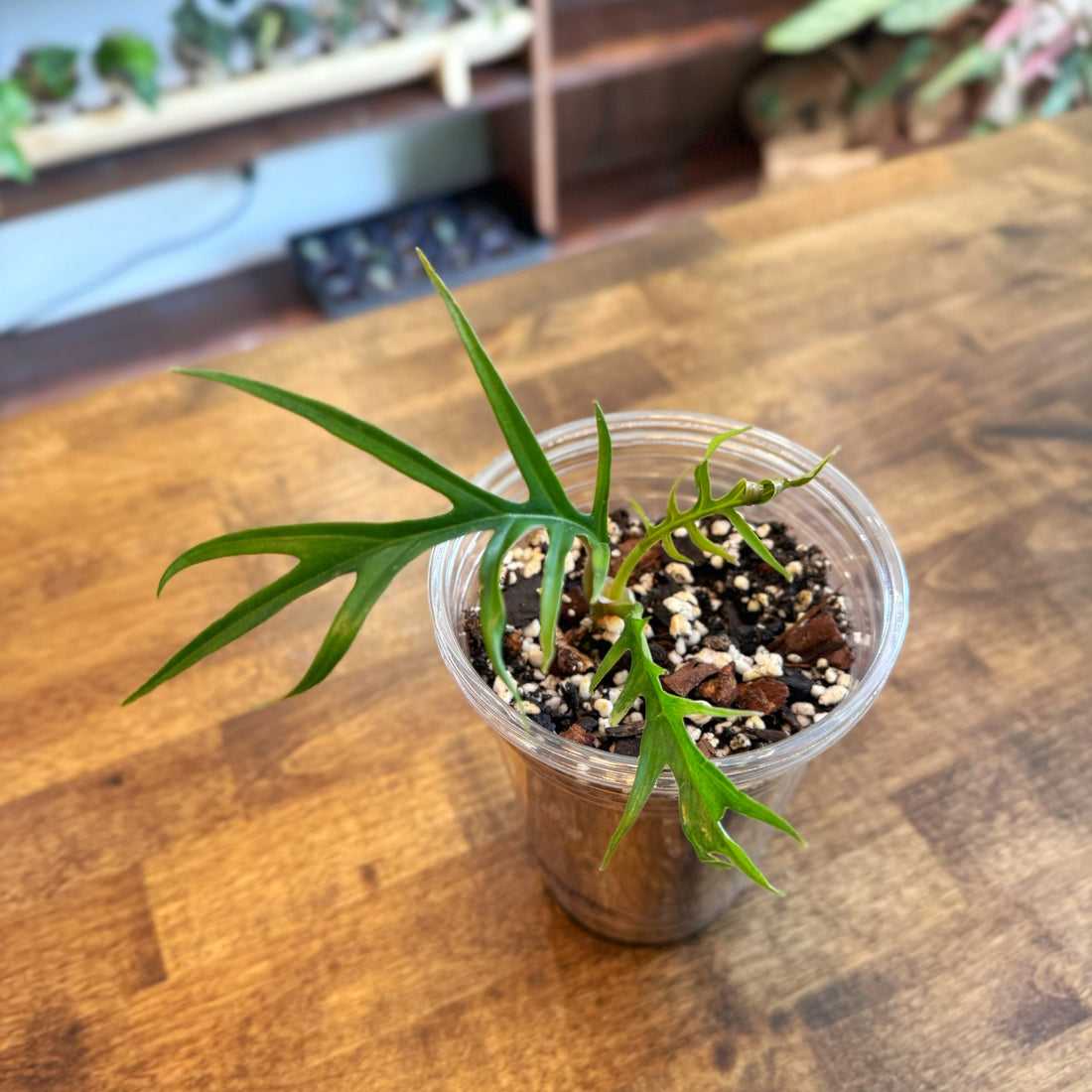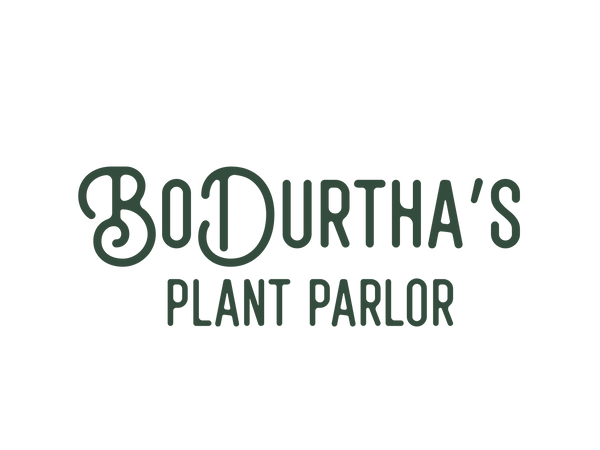
Philodendron Tortum Care
Philodendron tortum (Philodendron tortum)
Overview
- Distinctive skeletal, deeply cut foliage resembling palm fronds
- Fast-growing climbing aroid with refined tropical elegance
- Adds architectural interest and texture to any collection
- Best trained vertically to promote mature leaf formation
Philodendron tortum is prized for its unique, narrow-lobed leaves that resemble a botanical skeleton or palm frond, creating an airy, sculptural presence. Its unusual form combines delicacy and boldness, making it a standout collector’s piece. At BoDurtha’s, we train these onto moss poles early to encourage larger, more dramatic foliage and healthy vertical growth.
Origins
Native to the Amazonian rainforests of Brazil, where it climbs tree trunks under humid, dappled light conditions.
Light Requirements
Thrives in bright, indirect light.
- Direct sun can scorch its narrow leaves
- Too little light results in reduced growth and smaller leaves
- Ideal placement: near an east-facing window or filtered southern exposure
Watering
Water when the top 1–2 inches of soil are dry.
- Drooping leaves indicate thirst
- Yellowing leaves or mushy stems may signal overwatering
- Prefers moderate to high humidity for optimal growth
Soil & Potting
Use a chunky, well-draining Aroid Mix.
- Blend should include coco coir or peat, perlite, bark, and chunky organics
- Ensure pots have drainage holes to prevent root rot
- Breathable plastic or glazed ceramic pots support balanced moisture
Fertilizer
Feed monthly during spring and summer with a balanced liquid fertilizer, diluted to half strength.
- Reduce feeding in fall and winter
- Flush soil occasionally with plain water to prevent salt buildup
Recommended Growth Style: Bamboo stake
Philodendron tortum thrives when trained vertically.
- Bamboo stakes provide a support structure and encourage larger, mature leaves
- Vertical training enhances its airy, architectural silhouette
- Secure stems gently with soft ties or clips as they climb
Final Notes
Philodendron tortum is an exceptional choice for collectors seeking unique texture and sculptural form. Its skeletal, palm-like foliage pairs well with broader-leaved aroids for layered visual interest. At BoDurtha’s, we start these on moss poles early to unlock their full aesthetic potential and encourage healthy, mature growth.
